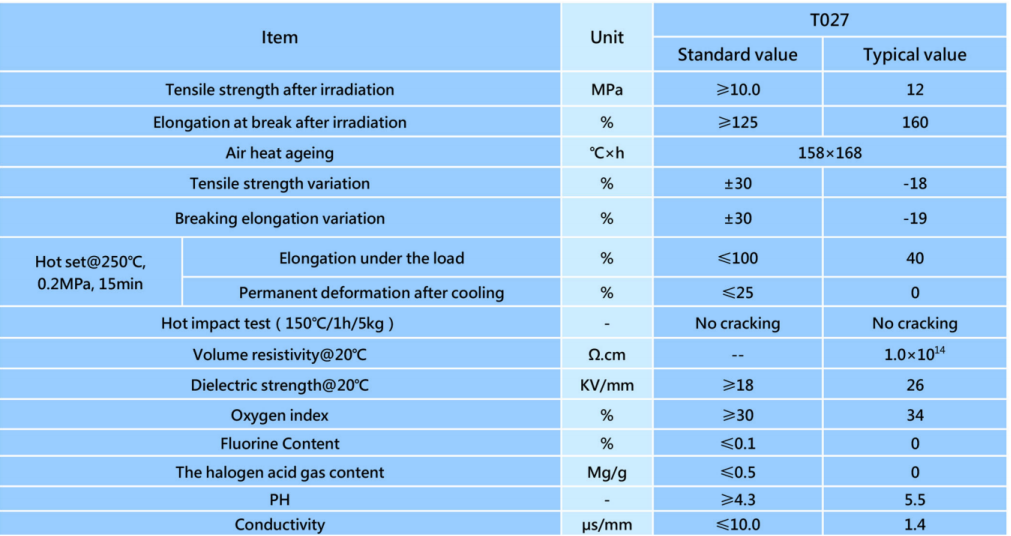Next-Generation Photovoltaic Cable: Unlocking the Potential of Irradiation Crosslinking LSZH HFFR

Product Overview:
Irradiation crosslinking Low Smoke Zero Halogen (LSZH) Halogen-Free Flame Retardant (HFFR) compounds represent a significant advancement in the field of photovoltaic (PV) cables, offering a comprehensive solution for enhanced safety, durability, and performance. Engineered to withstand the rigors of outdoor environments and harsh operating conditions, these compounds are specifically designed to meet the demanding requirements of solar power infrastructure.
Usage Notes:
When utilizing irradiation crosslinking LSZH HFFR compounds for photovoltaic cables, several key usage notes should be considered:
Compatibility: Ensure compatibility with other materials used in the construction of PV cables, including insulation and jacketing materials. Compatibility testing should be conducted to verify performance and longevity in the intended application.
Installation Conditions: LSZH HFFR cables are suitable for both indoor and outdoor installations; however, care should be taken to protect cables from excessive UV exposure and mechanical damage during installation. Proper cable management techniques should be employed to prevent kinking and abrasion.
Temperature Ratings: Verify temperature ratings of LSZH HFFR cables to ensure compatibility with the operating conditions of the PV system. LSZH HFFR compounds offer excellent thermal stability, but it is essential to adhere to manufacturer specifications to prevent overheating and degradation.
Regulatory Compliance: Confirm that LSZH HFFR compounds meet relevant industry standards and certifications for fire safety, environmental sustainability, and electrical performance. Compliance with international standards ensures reliability and safety in PV installations.
Handling and Storage: Handle LSZH HFFR cables with care to prevent damage to the insulation and jacketing materials. Store cables in a dry, well-ventilated area away from direct sunlight and extreme temperatures to maintain their integrity and performance.
Maintenance: Periodic inspection and maintenance of PV cables are essential to ensure optimal performance and longevity. Check cables for signs of wear, damage, or degradation, and replace any components that do not meet safety or performance standards.
In conclusion, irradiation crosslinking LSZH HFFR compounds offer a reliable and efficient solution for photovoltaic cable applications, providing enhanced safety, durability, and performance in solar power installations. By following the usage notes and best practices outlined above, users can maximize the benefits of LSZH HFFR cables and ensure the long-term reliability of their PV systems.



































